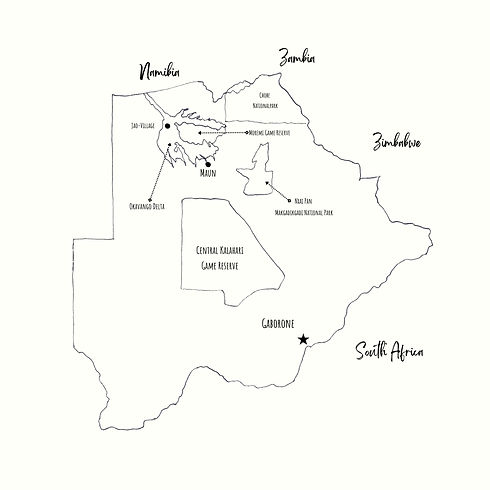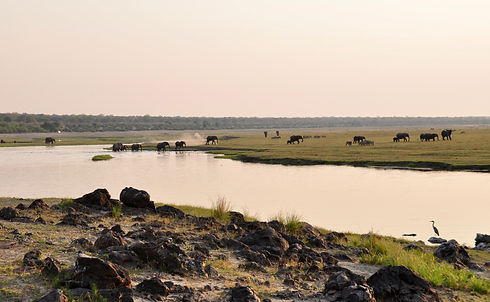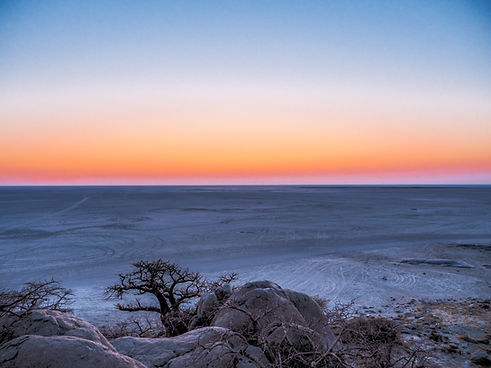Where we take you
Botswana offers a lot of different remarkable wildlife areas.The country is topographically flat, with approximately 70 percent of its territory being the dry Kalahari Desert.
To take care of its wildlife and fauna, Botswana's land area provides three national parks and seven game eserves.Each area offers its own unique flora and fauna which makes them definitely all a worthy place to visit.
Don't hesitate to ask us about our recommended places to stay for your unique safari experience.


The Okavango Delta
The Okavango Delta is a unique wetland that covers between 6 and 15 000 square kilometres of Kalahari Desert in northern Botswana and owes its existence to the Okavango (Kavango) River.
This World Heritage Site is a sanctuary to some of the world's most endangered animals and hosts over 400 bird species and 85 recorded species of fish including Tigerfish, Tilapia and Catfish.
The Okavango Delta is affected by seasonal flooding with flood water from Angola reaching the Delta between March and June, peaking in July. This peak coincides with Botswana’s dry season resulting in great migrations of plains game from the dry regions.
Chobe National Park
Chobe National Park is botswana's oldest National Park. Located in the north of the country Chobe National Park is also known as‘The Land of The Giants’. It is home to Africa's largest elephant population and comprises more than 10,000km2 of rich ecosystems, diverse landscapes and an almost unparalleled abundance of wildlife and birdlife all centred around the stunning Chobe River.There are four distinct areas in the park: the Chobe Riverfront, the Ngwezumba pans, Savute and Linyanti.



Moremi Game Reserve
Situated in the Okavango Delta the Moremi Game Reserve covers around 5,000 square kilometres and consists of pans, floodplains, lagoons, grasslands, forests of acacia trees, savannahs and dense mopane woodlands.
It's home for a diverse spectrum of wildlife. You get the chance to see huge herds of impala and tsessebe and in the dry season large herds of buffalo, wildebeest, elephant and zebra coming into the reserve from the dry Kalahari Desert in search of both food and water.
Nxai Pan
Makgadikgadi National Park
The Makgadikgadi National Park is situated in the middle of the dry savanna of north-eastern Botswana. It consists of the world's largest salt pans,a phantasmal mirage on which it appears nothing can survive.
The park is dominated by large salt pans, which attract large herds of animals especially during and after the rainy season.
Nxai Pan is a small piece located in the north of that puzzle of salt pans.
The fascinating landscapes, a group of seven mighty baobab trees – the famous Baines Baobabs – as well as a waterhole frequently visited by a pride of lions are the main highlights of the Nxai Pans National Park.

